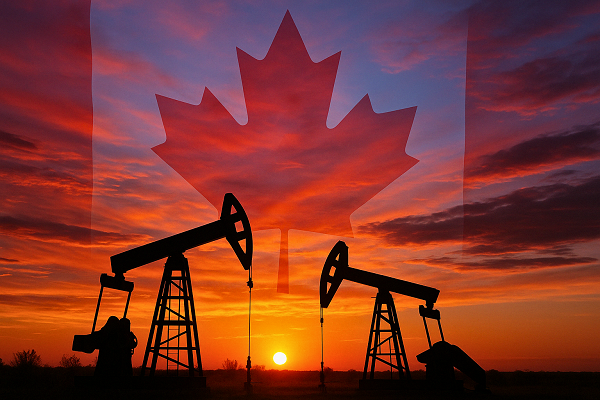Alberta
Danielle Smith blasts Trudeau gov’t as ‘lawless’ for pushing climate policies despite court rulings
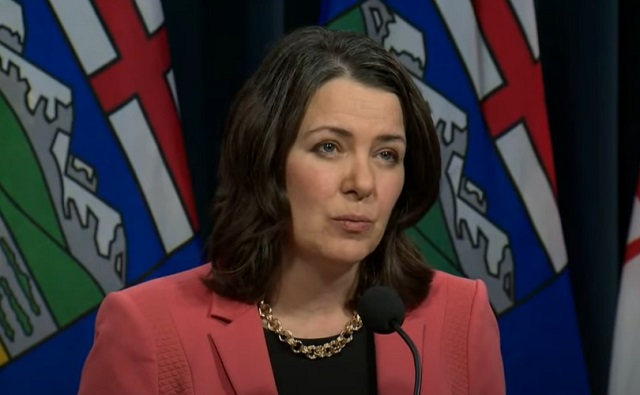
From LifeSiteNews
‘We’re getting pretty frustrated, they’ve had a Supreme Court loss now that says that they cannot use their federal power as a pretext to invade provincial jurisdiction. And they’re acting like that Supreme Court case didn’t happen’
Alberta Premier Danielle Smith tore a page off Prime Minister Justin Trudeau by saying he runs a “lawless federal government” for pushing ahead with his 2035 net zero energy law, despite the fact Canada’s constitution allows provinces full jurisdiction over their natural resources.
“We’re getting pretty frustrated, they’ve had a Supreme Court loss now that says that they cannot use their federal power as a pretext to invade provincial jurisdiction,” said Smith yesterday to reporters after being asked about Trudeau’s looming new energy regulations.
“And they’re acting like that Supreme Court case didn’t happen.”
Smith then lambasted the Trudeau’s federal government for appearing to ignore another court ruling which ruled against its single-use plastics ban.
“They had another loss on the issue of plastics, which was also an unconstitutional overreach and unreasonable. And instead of accepting the court’s judgment, they’re going to drag it out again,” Smith said.
“So, we’ve got a lawless federal government. And when you have a lawless federal government, then you’ve got to assert that the Constitution matters. We’ve got the Supreme Court behind us. We’re continuing to press that matter, they haven’t dropped it yet, but I can tell you, we are, just like [Saskatchewan] Premier [Scott] Moe, are getting increasingly frustrated.”
Smith’s comments come considering two recent court rulings, the most recent being the Federal Court of Canada on November 16 overturning the Trudeau government’s ban on single-use plastic, calling it “unreasonable and unconstitutional.”
The Federal Court ruled in favor of the provinces of Alberta and Saskatchewan by stating that Trudeau’s government had overstepped its authority by classifying plastic as “toxic” as well as banning all single-use plastic items, like straws, bags, and eating utensils.
Smith celebrated the court’s decision by saying it was a big “win” yet again for Alberta.
“Like Bill C-69, the federal government’s decision to unilaterally label perfectly safe plastic consumer products as ‘toxic’ has had wide-ranging consequences for Alberta’s economic interests and has put thousands of jobs and billions of investments at risk,” Smith said after the court ruling.
The second victory for Alberta and Saskatchewan concerns a Supreme Court ruling that stated that Trudeau’s law, C-69, dubbed the “no-more pipelines” bill, is “mostly unconstitutional.” The decision returned authority over the pipelines to provincial governments, meaning oil and gas projects headed up by the provinces should be allowed to proceed without federal intrusion.
The Trudeau government, however, seems insistent on defying the recent rulings by pushing forward with its various regulations.
Smith did not take kindly to this. “Like Bill C-69, the federal government’s decision to unilaterally label perfectly safe plastic consumer products as ‘toxic’ has had wide-ranging consequences for Alberta’s economic interests and has put thousands of jobs and billions of investments at risk,” Smith said.
“It’s time for the federal government to listen to the courts and to Canadians,” she added. “We urge them to not appeal this decision, and to immediately delete ‘plastic manufactured items’ from Schedule 1 of the current Canadian Environmental Protection Act to avoid further need of legal action by Alberta and other provinces.”
Despite Smith urging them to not appeal, the Trudeau government has moved to create and back an United Nations treaty to ban “plastic pollution” by 2024.
Trudeau’s ‘Clean Electricity Regulations’ could cause power bills to skyrocket
Smith’s comments against Trudeau also come as a draft version of the federal government’s “Clean Electricity Regulations” (CER) project billions in higher costs associated with a so-called “green” power transition, especially in the resource-rich provinces of Alberta, Saskatchewan, New Brunswick, and Nova Scotia, which use natural gas and coal to fuel power plants.
Business executives in Alberta’s energy sector have also sounded the alarm over the Trudeau government’s “green” transition, saying it could lead to unreliability in the power grid.
In addition to Smith, Saskatchewan Premier Scott Moe has likewise promised to fight back against Trudeau’s new regulations, recently saying that “Trudeau’s net-zero electricity regulations are unaffordable, unrealistic and unconstitutional.”
In September, Smith announced she is preparing to use her province’s Sovereignty Act to fight the electricity regulations if the Trudeau government does not back down.
Smith earlier this week vowed that Alberta would not be phasing out oil and gas, despite the regulations proposed by Trudeau’s government.
The Trudeau government is trying to force net zero regulations on all Canadian provinces, notably on electricity generation, as early as 2035. His government has also refused to extend a carbon tax exemption on heating fuels to all provinces, allowing only Atlantic provinces this benefit.
Alberta has repeatedly promised to place the interests of their people above the Trudeau government’s “unconstitutional” demands while consistently reminding the federal government that their infrastructures and economies depend upon oil, gas, and coal.
Smith even recently tore a page off a heckler’s fantasy suggestion of a solar and wind battery-powered future after she stepped into the lion’s den to advocate for oil and gas at a conference hosted by a pro-climate change think-tank.
The Trudeau government’s current environmental goals – in lockstep with the United Nations’ “2030 Agenda for Sustainable Development” – include phasing out coal-fired power plants, reducing fertilizer usage, and curbing natural gas use over the coming decades.
The reduction and eventual elimination of the use of so-called “fossil fuels” and a transition to unreliable “green” energy has also been pushed by the World Economic Forum (WEF) – the globalist group behind the socialist “Great Reset” agenda – an organization in which Trudeau and some of his cabinet are involved.
Alberta
Premier Smith explains how private clinics will be introduced in Alberta

Premier Smith and Hospitals and Surgical Health Services Minister Matt Jones laid out Alberta’s new dual practice model for surgeons. This change will let doctors perform more surgeries, cut wait times, keep talent in Alberta, and move patients through the system faster, all while protecting publicly funded care.
Alberta
Alberta bill would protect freedom of expression for doctors, nurses, other professionals
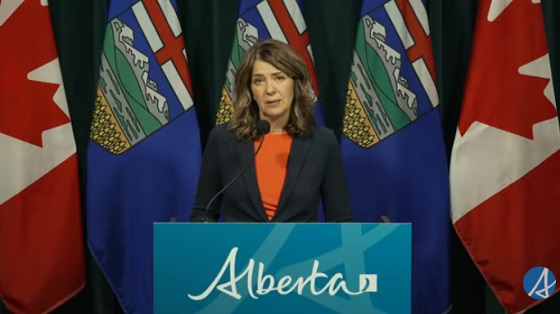
From LifeSiteNews
‘Peterson’s law,’ named for Canadian psychologist Jordan Peterson, was introduced by Alberta Premier Danielle Smith.
Alberta’s Conservative government introduced a new law that will set “clear expectations” for professional regulatory bodies to respect freedom of speech on social media and online for doctors, nurses, engineers, and other professionals.
The new law, named “Peterson’s law” after Canadian psychologist Jordan Peterson, who was canceled by his regulatory body, was introduced Thursday by Alberta Premier Danielle Smith.
“Professionals should never fear losing their license or career because of a social media post, an interview, or a personal opinion expressed on their own time,” Smith said in a press release sent to media and LifeSiteNews.
“Alberta’s government is restoring fairness and neutrality so regulators focus on competence and ethics, not policing beliefs. Every Albertan has the right to speak freely without ideological enforcement or intimidation, and this legislation makes that protection real.”
The law, known as Bill 13, the Regulated Professions Neutrality Act, will “set clear expectations for professional regulatory bodies to ensure professionals’ right to free expression is protected.”
According to the government, the new law will “Limit professional regulatory bodies from disciplining professionals for expressive off-duty conduct, except in specific circumstances such as threats of physical violence or a criminal conviction.”
It will also restrict mandatory training “unrelated to competence or ethics, such as diversity, equity, and inclusion training.”
Bill 13, once it becomes law, which is all but guaranteed as Smith’s United Conservative Party (UCP) holds a majority, will also “create principles of neutrality that prohibit professional regulatory bodies from assigning value, blame or different treatment to individuals based on personally held views or political beliefs.”
As reported by LifeSiteNews, Peterson has been embattled with the College of Psychologists of Ontario (CPO) after it mandated he undergo social media “training” to keep his license following posts he made on X, formerly Twitter, criticizing Trudeau and LGBT activists.
He recently noted how the CPO offered him a deal to “be bought,” in which the legal fees owed to them after losing his court challenge could be waived but only if he agreed to quit his job as a psychologist.
Early this year, LifeSiteNews reported that the CPO had selected Peterson’s “re-education coach” for having publicly opposed the LGBT agenda.
The Alberta government directly referenced Peterson’s (who is from Alberta originally) plight with the CPO, noting “the disciplinary proceedings against Dr. Jordan Peterson by the College of Psychologists of Ontario, demonstrate how regulatory bodies can extend their reach into personal expression rather than professional competence.”
“Similar cases involving nurses, engineers and other professionals revealed a growing pattern: individuals facing investigations, penalties or compulsory ideological training for off-duty expressive conduct. These incidents became a catalyst, confirming the need for clear legislative boundaries that protect free expression while preserving professional standards.”
Alberta Minister of Justice and Attorney General Mickey Amery said regarding Bill 13 that the new law makes that protection of professionals “real and holds professional regulatory bodies to a clear standard.”
Last year, Peterson formally announced his departure from Canada in favor of moving to the United States, saying his birth nation has become a “totalitarian hell hole.”
-

 Health1 day ago
Health1 day agoTens of thousands are dying on waiting lists following decades of media reluctance to debate healthcare
-

 Opinion24 hours ago
Opinion24 hours agoLandmark 2025 Study Says Near-Death Experiences Can’t Be Explained Away
-
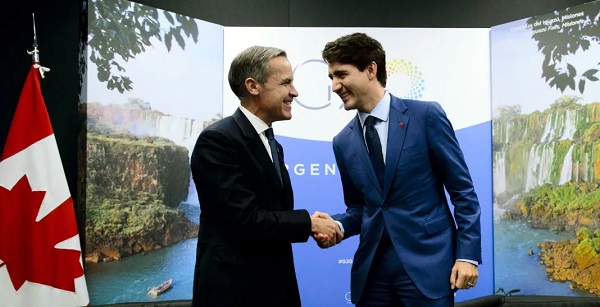
 Carbon Tax1 day ago
Carbon Tax1 day agoCarney fails to undo Trudeau’s devastating energy policies
-

 Business1 day ago
Business1 day agoBudget 2025: Ottawa Fakes a Pivot and Still Spends Like Trudeau
-
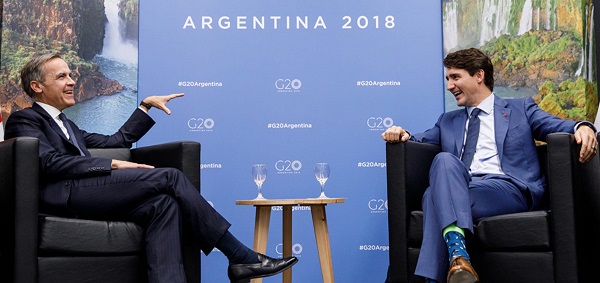
 International2 days ago
International2 days agoCanada’s lost decade in foreign policy
-

 armed forces2 days ago
armed forces2 days agoCanada At Risk Of Losing Control Of Its Northern Territories
-

 Focal Points1 day ago
Focal Points1 day agoSTUDY: TikTok, Instagram, and YouTube Shorts Induce Measurable “Brain Rot”
-

 Alberta57 mins ago
Alberta57 mins agoPremier Smith explains how private clinics will be introduced in Alberta


